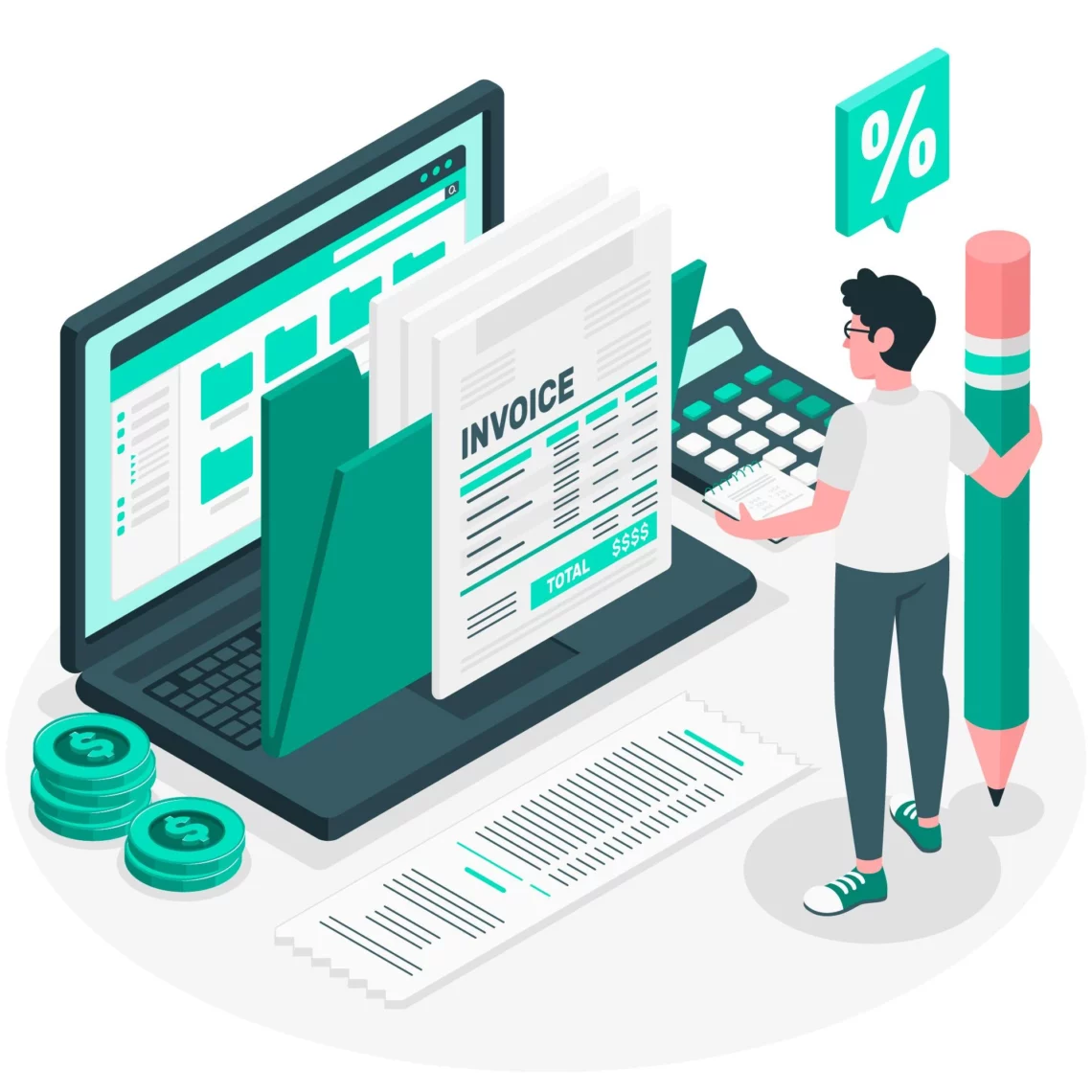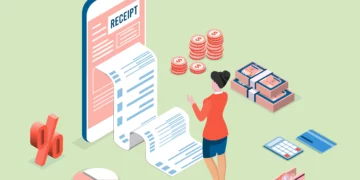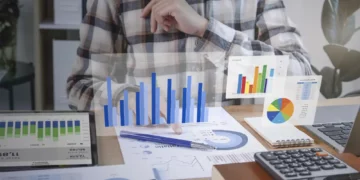Last Updated on November 28, 2025
What Is E-Invoicing?
E-invoicing or electronic invoicing is the digital process of exchanging invoices between suppliers and buyers. This convention is in place for B2B enterprises that digitally prepare e-invoices.
The Goods and Services Tax Network or GSTN authenticates these invoices. The government has put the e-invoicing system in place to ensure that all businesses in the country follow a consistent, centralised format before sending invoices to the portal.
The centralised invoice format enables easier policy compliance. It is followed in all industries and ensures collaborative harmony in the GST ecosystem.
What Is an E-Invoice?
An e-invoice is a digital invoice with a specific format given by the government. It contains the invoice data (deliverables and receivables) in a form that the buyer’s organisation can automatically import into their payable system.
Who Does E-Invoicing Apply To?
Under GST, the government mandated e-invoicing from 1st October 2020. It applies to all taxpayers with an aggregate turnover under GST worth more than 500 crores INR in any fiscal year between 2017-18 and 2019-20.
On 1st January 2021, e-invoicing became applicable for businesses with an aggregate turnover of over 100 crore INR in any fiscal year between 2017-18 and 2019-20. On 1st April 2020, it was extended and began to include businesses with a turnover of over 50 crore INR.
A year later, i.e. on 1st April 2021 of the current year, the government extended its policy and included businesses with more than 20 crore INR turnover. From 1st October, e-invoicing will apply to companies with a turnover of more than ten crore rupees.
Also, Read: Different Types of Invoices
What Is the Process of E-Invoicing?
The e-invoicing process takes place in two steps. The first step is the buyer/supplier interaction, where the supplier generates an invoice and uploads it in a digital JSON format on Invoice Registration Portal or the IRP. The portal then validates the invoice data and produces a unique invoice reference number and QR code. In the second step, the information from the IRP automatically transfers to the GST and e-way portal.
When the GST portal receives the invoice data, the GSTR-1 return gets auto-populated. Hence the need for manual entry of GSTR-1 return data is eliminated. The e-way bill system generates Part A of the bill and later Part B if details of the transporters are given.
What Is an E-Invoicing Software?
An e-invoicing software is a technology that helps businesses streamline the process of generating e-invoices. They further simplify the purchase and payment processes. An e-invoice software can guarantee you safety, data security and accuracy.
Why Do We Need E-Invoicing?
E-invoicing brings forth many benefits for businesses as well as the administration. Let’s have a look at a few of them.
Increases Transparency
Electronic invoices increase transparency into invoice data and benefit both the buyers and suppliers. It provides accurate and more easily accessible insights into purchase orders, contracts, payables, and additional documentation.
Auditing
One of the most significant benefits of e-invoicing is expense auditing enablement. Electronic invoicing helps track invoices and document data on a digital platform. This enables easy access to accurate data at the time of audits.
Faster processes
E-invoicing allows businesses to retrieve, aggregate and synchronise data from various sources and devices and eliminates duplication of information. Electronic invoicing enables companies to receive invoices in different formats, which are automatically imported into their systems. All accounts payable data is unified on a single platform. This makes data management more accessible and faster.
E-invoicing streamlines invoice processing cycles and, in turn, minimises the need for human intervention in many invoice processing, tracking, and approving tasks. This reduces the possibility of data contamination through human error and increases turnaround times.
Increases productivity
The process of e-invoicing is automated and requires minimal human effort. This means the human resource in your organisation does not have to bother with repetitive tasks and manual work. Instead, they can focus on activities that require human talent and expertise, like innovation and strategy.
Higher policy compliance
Electronic invoicing ensures higher compliance with rules, laws and policies than manual processes. The businesses have to follow a specific e-invoice format to ensure that their invoice is validated.
Clarity over expenses and savings
E-invoicing isn’t just a way to digitise receipts. It allows businesses to gain actionable knowledge by tracking every odd buck spent on purchases. This allows the management and finance teams to procure a strategically significant insight into the main expenses.
More accurate data
No matter how disheartening it may sound to us organic beings, automation will always trump humans when it comes to accuracy. Electronic invoicing processes allow you to track purchase approvals, payments and validations in real-time. This reduces the probability of over and underpayments and minimises duplicate payment risk.
Retrieval of invoices
You need GST invoices to calculate the input tax credit amount. It becomes difficult to retrieve them in case of manual invoicing when you misplace them. However, in e-invoicing, the IRP creates a QR code for every invoice. You can scan this code to generate the invoice and download it.
Protection from tax evasions
Electronic invoicing increases transparency and real-time tracking of invoices and payments. This helps reduce the scope for invoice data manipulation and helps minimise tax evasion.
What Is the E-Invoice Format?
The e-invoice format or e-invoice schema details optional and mandatory fields. The compulsory fields of an invoice must be there for the invoice to be valid, whereas the business can add the optional fields per their requirements.
The suppliers have to fill in the mandatory fields before registering the invoice on the IRP. If the field does not have any value, you can report it as NIL. Here are the fields that are mandatory in the e-invoice.
- Supplier’s information
- Receiver’s information
- Basic information
- Details of line items of the invoice
- Document total
Frequently Asked Questions (FAQ)
Q- What is “aggregate turnover” under GST?
“Aggregate turnover” is the amount of all goods and services that are taxable. This does not include supplies for which tax is payable on a reverse charge basis.
Q- What is the current e-invoice limit?
The e-invoicing policy currently applies to companies with a turnover of more than 20 crore rupees. However, from 1st October 2022, the policy will extend to companies with a turnover of over ten crore rupees.
Q- What is the e-invoicing portal?
In the e-invoice system, the GST-registered person uploads the invoice on the Invoice Registration Portal or IRP. This portal returns an IRN or an Invoice Reference Number and QR code.
Q- What is the maximum number of line items an e-invoice can have?
The maximum number of line items that an electronic invoice can have is 1000. However, it can exceed to 5000 line items in special cases if a business makes a request.










Discussion about this post